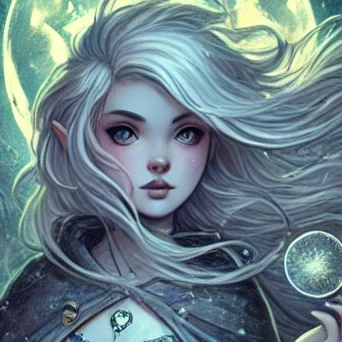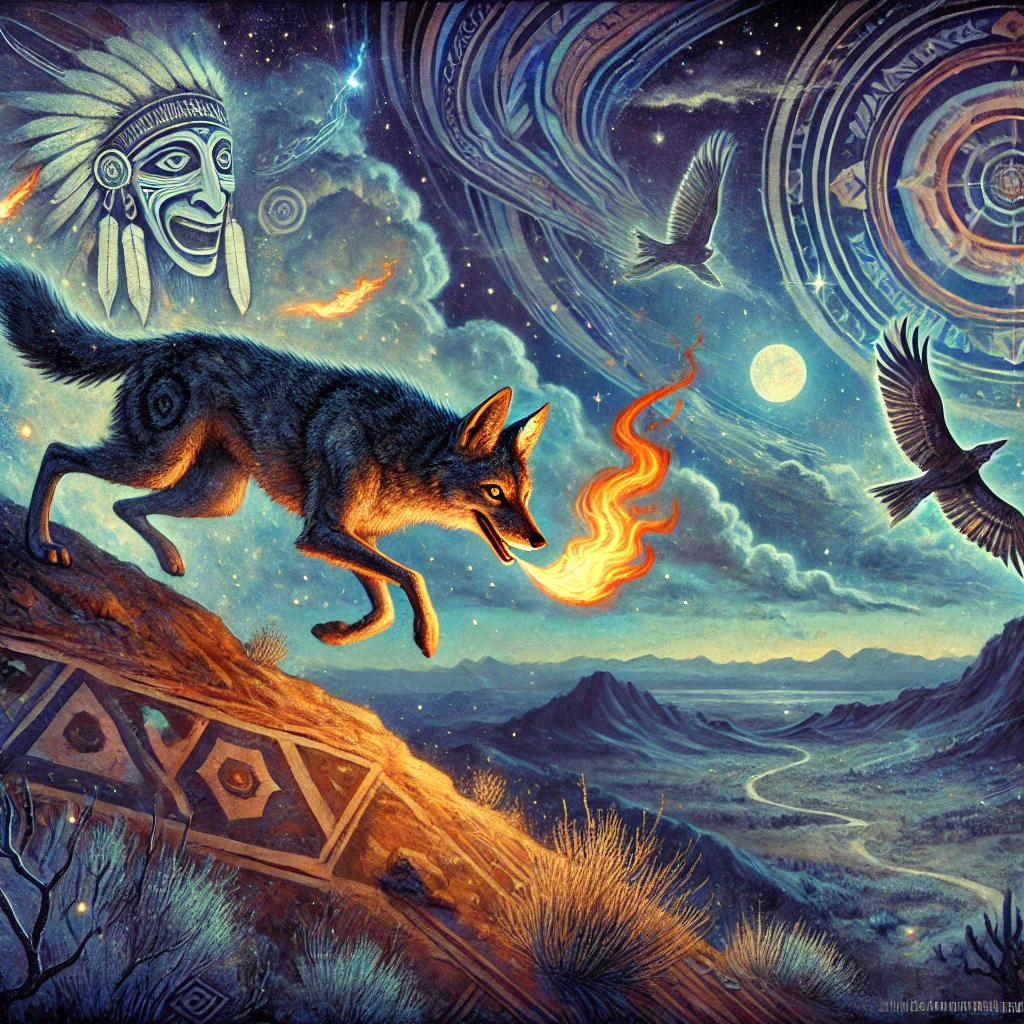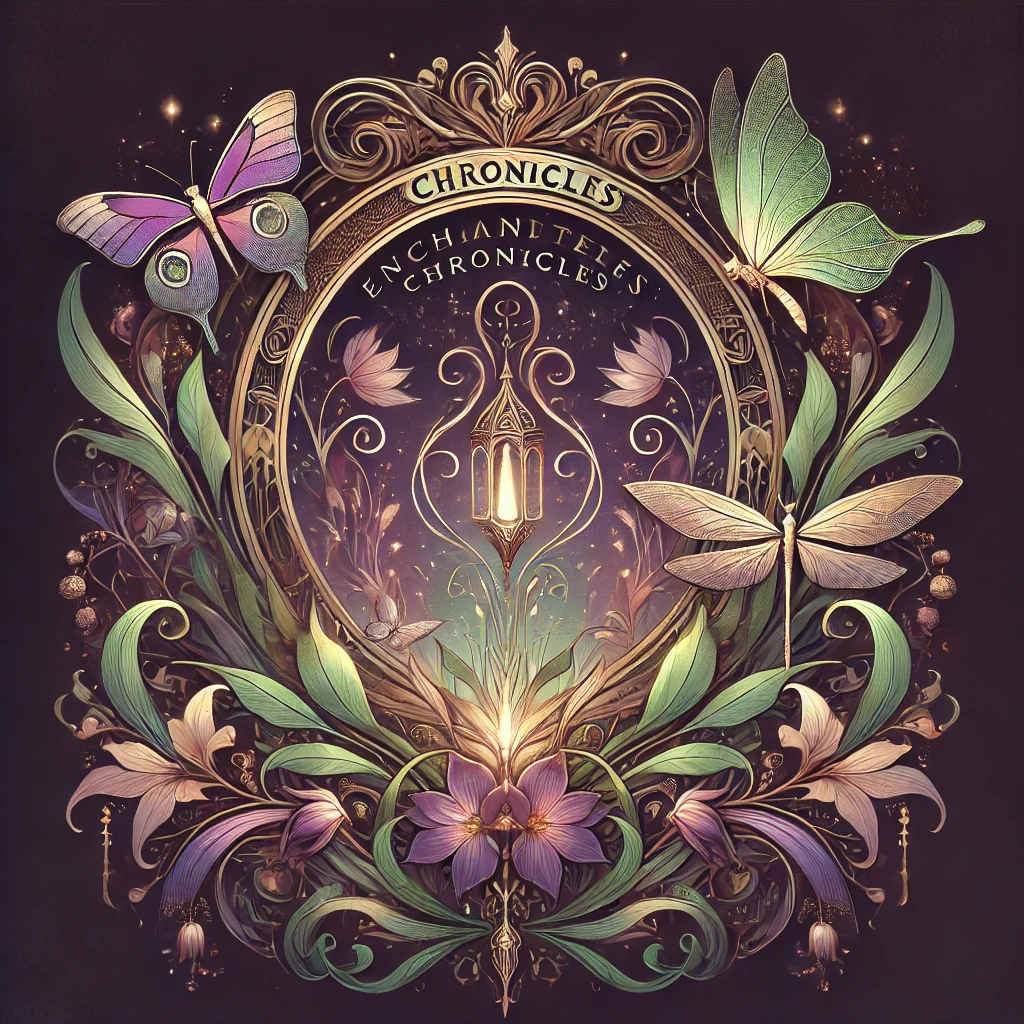The Trickster Coyote: A Native American Legend of Wisdom and Mischief
The Coyote Trickster is one of the most enduring and widely recognized figures in Native American folklore. Stories about the trickster Coyote appear across various tribes, particularly among the Plains, Southwestern, and Pacific Northwest Indigenous peoples. From the Navajo and Hopi in the desert Southwest to the Lakota and Blackfoot of the Great Plains, Coyote serves as a complex figure—sometimes a creator, sometimes a fool, but always a teacher.

Elaris Windglimmer

The Trickster Coyote: A Native American Legend of Wisdom and Mischief
Origins and Cultural Significance of the Trickster Coyote Legend
This Native American Folklore of the trickster Coyote is deeply rooted in oral storytelling traditions, passed down from generation to generation. These stories for the kids were used to explain the mysteries of the world, reinforce cultural values, and entertain around the fire on long winter nights. Coyote’s stories often illustrate moral lessons, warning listeners about the dangers of pride, greed, or foolishness while celebrating cleverness and adaptability.
The Landscape of the Legend
Coyote’s tales are set in the vast landscapes of North America, from the deserts of Arizona and New Mexico to the forests and rivers of the Pacific Northwest. The environments in which these stories take place play a vital role, as nature itself often serves as both a setting and a character in the mythos.
In some versions, Coyote interacts with the Great Spirit, powerful deities, or even celestial bodies, bringing about creation myths that explain the formation of rivers, mountains, and even the stars. Other tales depict him playing tricks on fellow animals like Raven, Wolf, and Bear, highlighting the balance between wit and recklessness.
A Classic Native american folklore: How Coyote Stole Fire
One of the most famous Coyote legends is “How Coyote Stole Fire” that emphasizes the power of wit, a tale that exists in many variations among different tribes, including the Shoshone, Karuk, and Apache.

The Trickster Coyote (USA)
The Story of the power of wit
A long time ago, fire belonged only to the Thunder Beings, powerful spirits who kept it hidden high in the mountains. Without fire, the animals and humans suffered in the cold, unable to cook their food or stay warm during the harsh winters.
Coyote, always looking for a challenge, decided to steal fire and bring it to the people. Under the cover of night, he climbed the mountain, creeping past the Thunder Beings who guarded the flames. As he got closer, he saw a blazing fire in the center of their camp. He knew he had to act quickly.
Using his cunning, he distracted the Thunder Beings, pretending to stumble and fall in a comical display. When the Thunder Beings laughed at his clumsiness, Coyote seized the opportunity and grabbed a burning branch, dashing away at lightning speed.
The Thunder Beings roared in anger and chased Coyote, throwing bolts of lightning at him. Coyote ran as fast as he could, dodging the fiery strikes. But he knew he couldn’t carry the fire alone for long. So, as he ran, he passed the flame to his animal friends—Squirrel, who carried it in her bushy tail, then Woodpecker, who hid it in a tree, and finally to Frog, who swallowed a spark and carried it in his belly.
Though the Thunder Beings nearly caught Coyote, the fire had already been spread across the land. It lived in the trees, ready to be drawn out whenever humans needed it. From that day on, thanks to Coyote’s cleverness, people could create fire by rubbing sticks together or striking stones.
The Meaning Behind the Myth
The Native American story of Coyote stealing fire is more than just a thrilling adventure—it reflects themes of sacrifice, ingenuity, and the sharing of knowledge. Many Native American cultures view fire as a gift, a symbol of warmth, survival, and civilization. Coyote, though mischievous, acts as a cultural hero, ensuring that the people have the tools they need to thrive.
This tale also warns of recklessness and consequences. Coyote’s tricks often succeed, but they also bring trouble, sometimes leading to chaos or unintended side effects. He is both a benefactor and a troublemaker, reflecting the duality of nature—creation and destruction, wisdom and foolishness.
Coyote in Modern Culture
Today, the Trickster Coyote continues to influence literature, movies, and art. Elements of his character appear in well-known trickster figures like Br’er Rabbit, Loki in Norse mythology, and even modern animated characters like Bugs Bunny. Indigenous authors and storytellers still share Coyote’s tales, ensuring that his legacy remains alive in contemporary storytelling.
The lessons of Coyote’s stories remain relevant, reminding us of the power of wit, the importance of sharing, and the fine line between cleverness and arrogance. Whether as a hero, a fool, or something in between, Coyote’s trickster spirit continues to run wild across the landscapes of legend.

